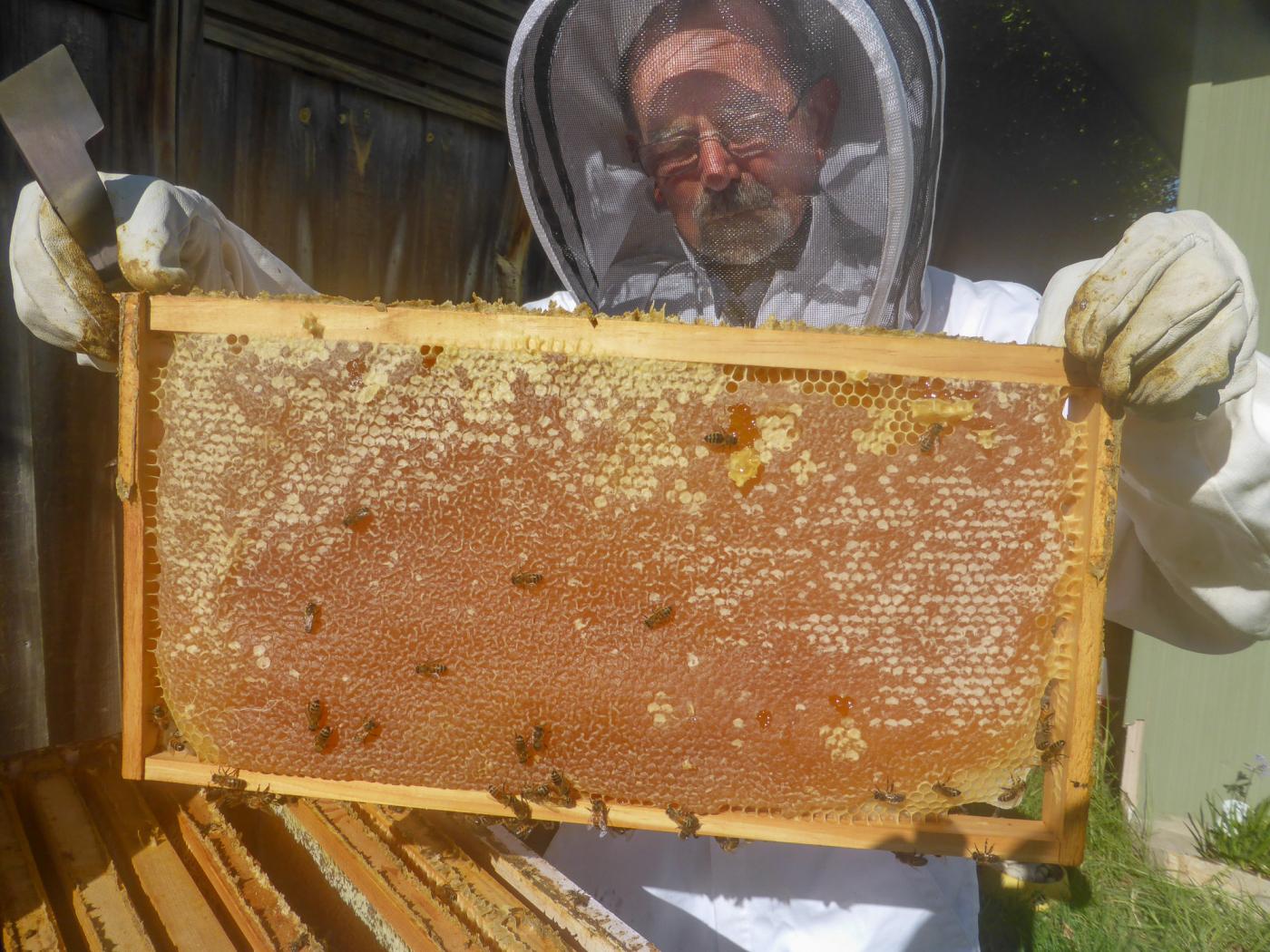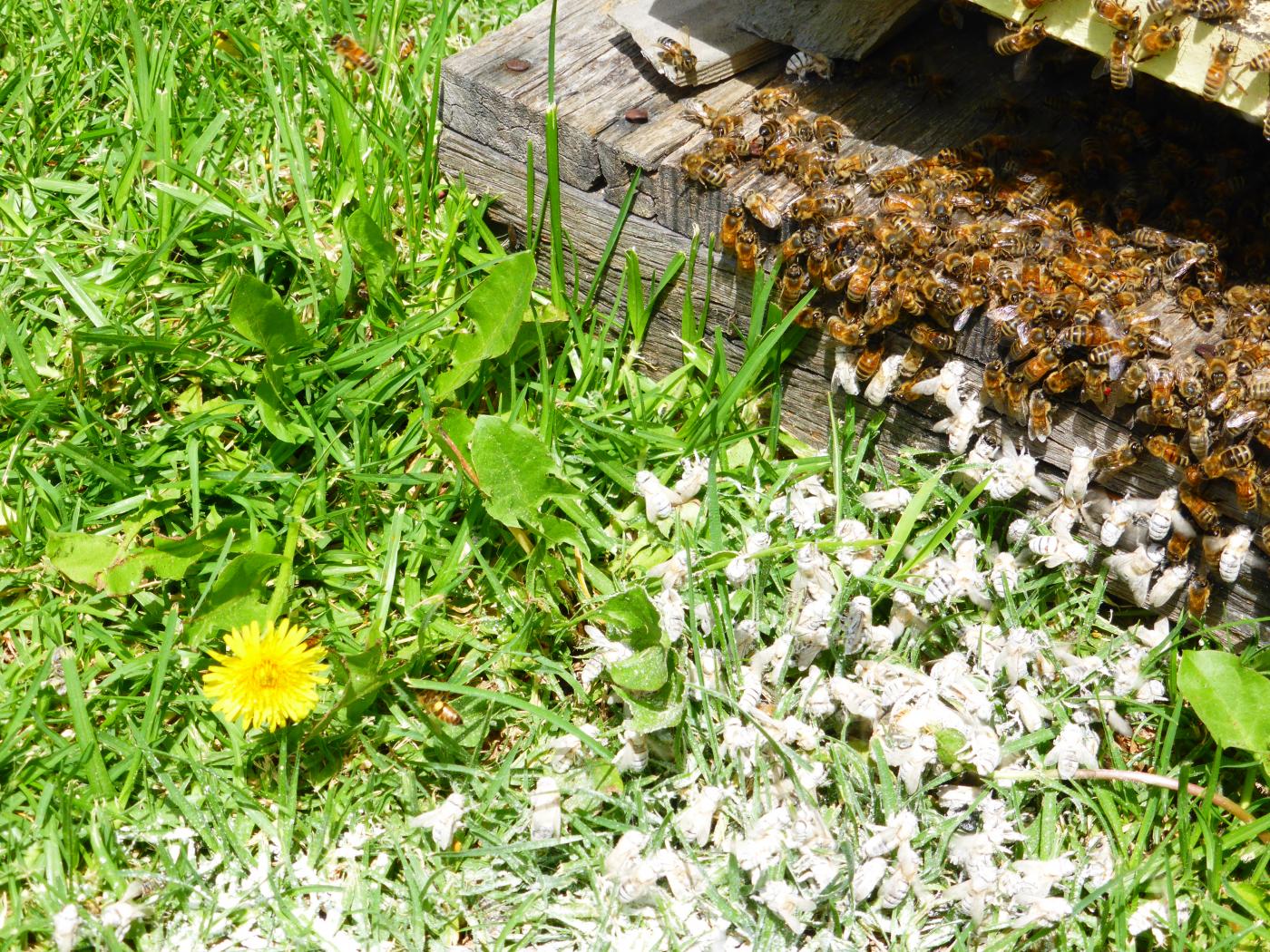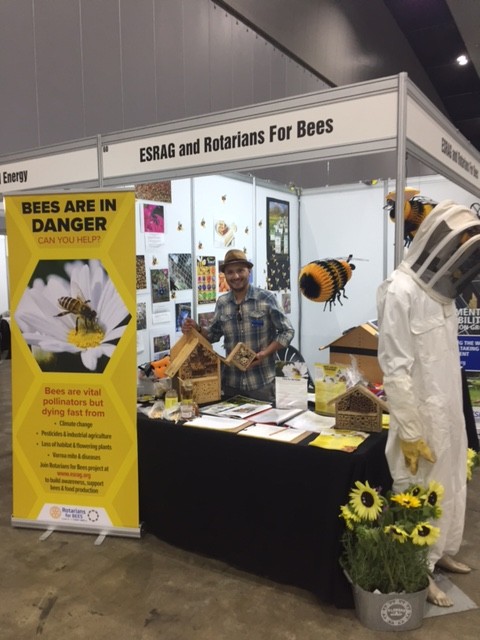Rotarians for Bees

Rotarians for Bees
Location/Club: Rotary Club of Canterbury, Australia
Keywords: Biodiversity, Pollination, Environmental Education
Website Link : Website.
September 2019 Update
Here is an update on R4Bees activities: AN AWAKENING – AN UPDATE FROM ROTARIANS 4 BEES
BACKGROUND
Then at the 2018 Rotary Convention in Toronto: two Australians connected half a world away from home, and brainstormed about how Rotary could help conserve bee populations. From that conversation, in later conversations at kitchen tables and Rotary meetings, grew Rotarians for Bees (R4B), an adventure equipping Rotarians and the wider community to care for pollinators and the human food supply that depends on them.
Honey bee populations worldwide are declining under the combined impact of disease, pesticides, climate change, and habitat loss. This poses a huge threat to human food security.
“Honey bee pollination (53 crops) – 75% of our food crops– contribute $14.2 billion to the Australian economy,” says Pat Armstrong, an ESRAG Director and Chair of ESRAG’s Australian Regional Chapter. “People can feel helpless before a problem of this magnitude. They need something they can do themselves.” There is a similar story for populations of other pollinators, such as native bees, butterflies, birds and mammals.
In Toronto, Rotarian Susie Cole invited Pat to speak at a meeting of Rotarians interested in bees “Susie could see the potential of people interested in bees connecting with ESRAG,” Pat recalls. In less than a year, Rotarians have created vital connections between beekeepers, industry groups, funders of scientific research, and a rapidly-growing network of Rotarians.
The buzz (“there is no end to the bee jokes!” Pat says wryly) started with and led by John McCaskill and the Rotary Club of Canterbury, Australia. It spread exponentially when Pat invited the fledgling Rotarians for Bees to mount a booth at a multi-district Rotary conference which drew over 1,500 people from across Victoria. Artistic people designed a stand with a beautiful banner and logo (a wheel of bees) to entice people to step in and learn. “At that conference alone we signed up almost 80 people,” Pat says. “We’re connecting people around a common interest and giving them something that meets their needs.”
This includes specific, concrete actions ordinary people can take themselves, from setting up a small box with bamboo sticks, each with a small nesting hole for native bees (“a Bee B & B,” says Pat) to planting flowers that attract pollinators. “Creating Rotary Pollinator Parks is well within Rotary clubs’ capability,” Pat says. As Christmas approaches Down Under, R4B plans to sell flowering plants for Christmas gifts to raise awareness and help Australians be part of the solution to food security.
R4B draws on other essential Rotary capacities: needs assessment, asset-mapping, and strategic planning. They are learning about the diversity of Australia’s professional and amateur beekeeper groups, the challenges of reaching the community with vital information about protecting bee populations, and emerging scientific knowledge.
R4B has emerged as a clearinghouse and connector, informing the wider public about how they can become part of the solution. (See the IPBES Assessment on Pollinators). R4B’s Ted and Rosemary Waghorne “have written wonderful papers, Pat says, “with summaries of conference papers on pollinators from RICON in Hamburg.”
R4B and ESRAG are now networking with the Australian Honeybee Industry Council and research funders including the WHEEN Foundation. “We’ve discovered various needs, some beyond our scope,” Pat says. “It’s all about forming partnerships, bringing together different ideas, different questions. Rotarians can be the catalysts in all this.”
Rotarian conviviality is the secret spice. “The working group meets monthly in a wonderful spirit of fellowship,” Pat says. Some of the most fruitful conversations have occurred over “tea, coffee, biscuits, and cheese, in someone’s home.”
Biscuit by biscuit, bee by bee, R4B is a great example of how Rotarians can build one thread – in this case, the love of bees – into a tapestry of solutions to a massive environmental challenge.
THE PROBLEM:
- Climate change is having an enormous effect, leading to a decline in pollinators and honey production world-wide.
- Disease: the varroa mite carries a disease that destroys hives and bees. In the US varroa mite resulted in a loss of ~50% hives. In Australia 50% of pollinators are wild bees. The mite has not yet reached Australia, but its almost inevitable arrival will cause a loss of up to 75% of Australian pollinators. The impact will include loss of pollinators, impacting on both food production and the economy; and use of pesticides in hives, thus adulterating honey. It will take up to 10 years to rebuild bee numbers and restore the balance.The varroa mite is developing an immunity to the chemicals that are our only current weapon. Another possibility is to develop ‘hygienic bees’ that are resistant to varroa. This will require a significant amount of research at a high cost.
- Use of pesticides in agriculture, by local councils and in gardens. High-strength Round-Up type chemicals are banned in Europe, but not Australia. Not only do they kill detrimental insects, but also the ‘good’ ones.
- Fragmentation within the industry. There are both commercial and hobby beekeepers. In Victoria alone there are around 9,000 beekeepers, all of whom are registered with the government, but only ~2,000 of whom belong to Apiary clubs. Privacy issues preclude identification outside the government of non-club apiarists. Whilst each state has a local association, there is little communication between them.
- Education: It is not known how well educated the majority of beekeepers is, particularly in regard to the varroa threat. The Victorian Apiarists Association is hoping to train a number of members to Certificate III level, with a view to their training other members.
- Adulterated honey with sugar-based additives. Currently, there is no testing facility in Australia to identify adulterated honey.
GOING FORWARD:
- The Rotarians for Bees (RFB) Committee has:
- Articulated a vision for R4B: Rotary is a catalyst for building a sustainable bee population in Australia.
- Developed a logo for R4B.
- Developed an information sheet for distribution at Rotary events.
- Purchased a banner for RFB. Rotary clubs are encouraged to display the banner at club meetings to generate discussion of the issue.
- Made contact with the WHEEN Foundation, a not for profit organisation promoting the importance of bees, and Earthwatch.
- Initiated a database of Rotarians and others interested in the project, principally through expressions of interest at the recent
Multi-District conference. A strategy will be developed to maintain contact with interested parties.
- A strategic action plan that will include:
- Making contact with other bodies with interest in bee promotion; and government departments with interest in related areas, e.g. apiary, agriculture.
- Developing a promotional plan, including appropriate messages for the community in regard to R4B using social media, contact with clubs, articles in RDU, a speakers’ bank, etc.,
- Developing an R4B page on the ESRAG website.
- Developing a plan for contacting unregistered beekeepers and investigating training for unregistered beekeepers.


